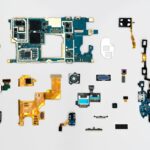
Introduction to 5G Technology
Evolution of Wireless Communication
The journey of wireless communication has been transformative. From the early days of analog signals to the crisp digital connections we enjoy today, each generation of technology has brought profound changes.
- 1G: Introduced basic voice calls.
- 2G: Added digital voice and SMS capabilities.
- 3G: Brought mobile internet access.
- 4G: Enhanced data speeds for streaming and applications.
These advancements laid the foundation for 5G, where the focus shifts to speed, connectivity, and enabling a smarter world.
Basics of 5G Technology
5G technology represents the fifth generation of mobile networks, designed not just for faster downloads but to support a multitude of devices simultaneously. Imagine a world where:
- Download speeds can exceed 10 Gbps.
- Latency is reduced to under 1 millisecond.
- Connectivity extends to millions of devices per square kilometer.
This shift empowers a new era of communication, promising innovations across industries and everyday life. The implications are vast, ranging from improved mobile experiences to the backbone of IoT ecosystems.
5G Applications in Electrical Engineering
Smart Grids and Energy Management
As 5G technology rolls out, its applications in electrical engineering become clearer, particularly in the realm of smart grids. These grids use advanced communication technologies to optimize energy distribution.
- Real-time monitoring improves outage management.
- Automated responses enhance system resilience.
Imagine a neighborhood where your smart meter communicates with the grid, adjusting energy usage during peak hours to save costs and ensure efficiency.
Internet of Things (IoT) Integration
Moreover, the integration of 5G with IoT devices opens up a world of possibilities. With billions of devices expected to connect, the efficiency of systems can skyrocket.
- Sensors continuously relay data, from electrical consumption to renewable energy production.
- Data analytics helps in predictive maintenance, reducing downtime and increasing reliability.
This synergy allows engineers to design more intelligent, interconnected electrical systems that better respond to real-time demands and environmental changes.
Enhancements in Electrical Systems with 5G
Increased Connectivity and Speed
Transitioning from the previous discussion on IoT integration, 5G's impact on connectivity cannot be overstated. With its high bandwidth and low-latency capabilities, electrical systems can now handle a multitude of connected devices simultaneously.
- Faster data transfer means real-time monitoring and control.
- Enhanced network capacity supports more users and devices without slowing down.
Imagine a smart factory where machines communicate instantaneously—optimizing production like never before.
Improved Reliability and Latency
In addition to connectivity, 5G greatly enhances reliability and reduces latency in electrical networks.
- Low latency (around 1 millisecond) ensures quick responses for critical applications.
- Network slicing allows for prioritized connections, crucial for emergency services.
This level of performance transforms electrical systems, making them more resilient and efficient. Picture an emergency management scenario where real-time data leads to faster responses—minimizing risks and ensuring safety.

Impact of 5G on Electric Vehicles
Advancements in EV Charging Infrastructure
Building on the resilience that 5G brings to electrical systems, its benefits extend significantly to electric vehicles (EVs). Enhanced connectivity facilitates the evolution of charging infrastructure.
- Smart charging stations can communicate with EVs to optimize charging times, reducing costs.
- Real-time data informs drivers about available stations, preventing range anxiety.
Imagine driving through a city where your EV naturally finds the fastest charging solution—this is becoming a reality thanks to 5G.
Integration of 5G in Autonomous Vehicles
Moreover, 5G plays a crucial role in the development of autonomous vehicles.
- V2X (Vehicle-to-Everything) communication allows vehicles to interact with nearby infrastructure and other road users, enhancing safety.
- Real-time updates on traffic conditions enable smarter route planning.
Picture an autonomous car that not only navigates but also adjusts its speed based on upcoming traffic lights—thanks to the speed and reliability of 5G. This seamless integration is steering us toward a new era of intelligent transportation.

5G Enabled Smart Homes
Automation and Energy Efficiency
Transitioning from the influence of 5G on electric vehicles, smart homes represent another frontier where this technology shines. With 5G, home automation becomes more efficient and intuitive, allowing devices to communicate seamlessly.
- Energy management systems can monitor usage and optimize consumption in real time.
- Automated lighting and heating can adjust based on occupancy or time of day.
Imagine coming home to a house that prepares itself for your arrival, ensuring comfort while minimizing energy waste.
Integration of Smart Appliances with 5G
5G also enhances the integration of smart appliances, creating a cohesive living space.
- Smart refrigerators can keep track of inventory and suggest recipes based on what you have.
- Washers and dryers can be programmed to run during off-peak hours, saving on energy bills.
Picture an entire kitchen where appliances communicate, making life easier and more energy-efficient. The future of home living is not just smarter but also greener, thanks to 5G technology.

Challenges and Solutions for 5G Implementation in Electrical Engineering
While the benefits of 5G in electrical engineering are promising, several challenges must be addressed to ensure successful implementation. Transitioning from smart homes to broader applications reveals these hurdles.
Technological Barriers
- Infrastructure costs can be prohibitive for widespread deployment.
- Integration with existing systems can be complex, requiring extensive upgrades.
To tackle these issues, investing in collaborative initiatives among stakeholders can offset costs and streamline upgrades.





